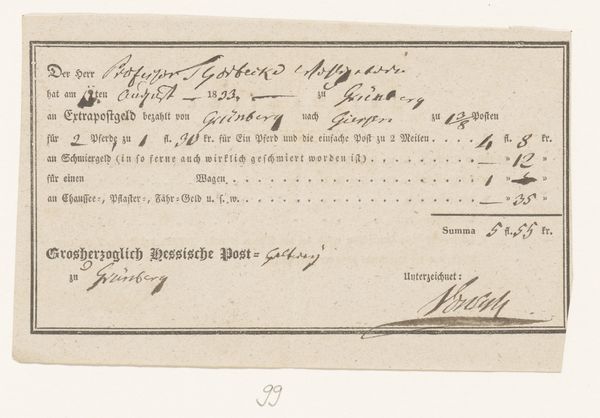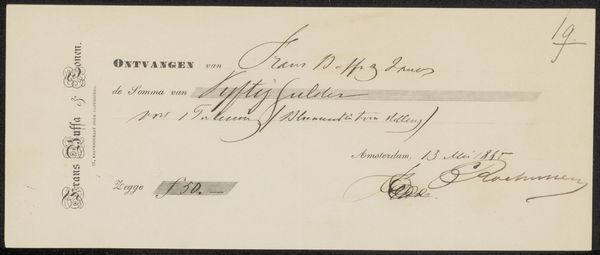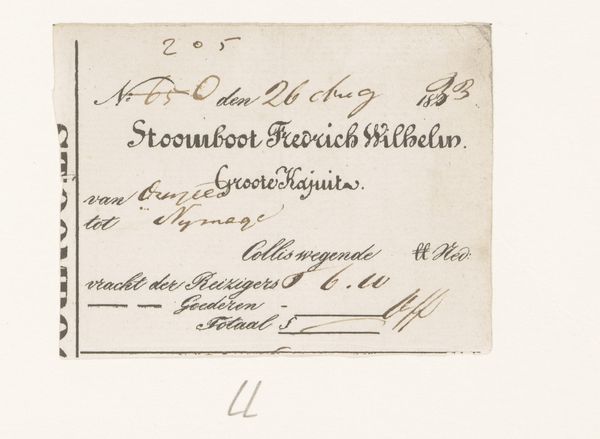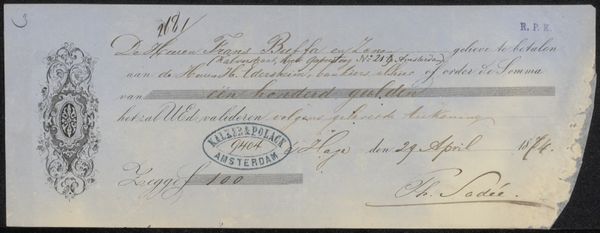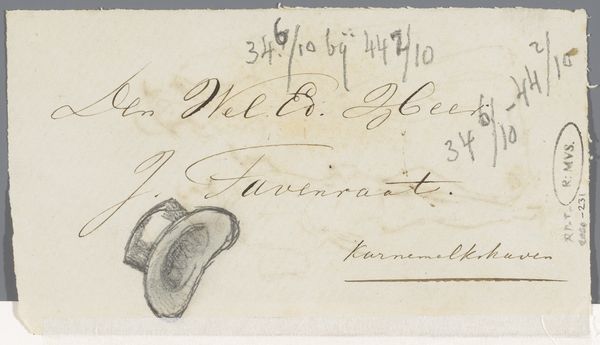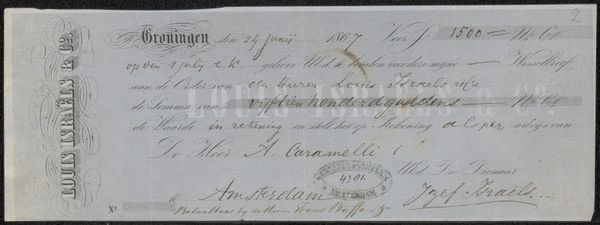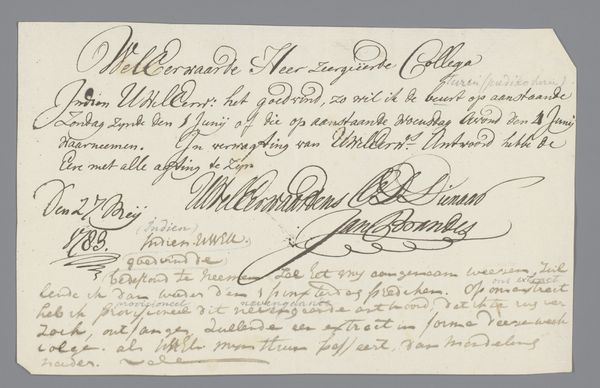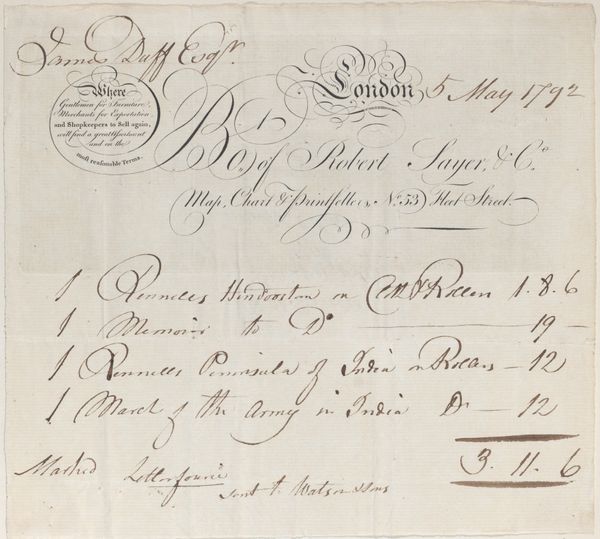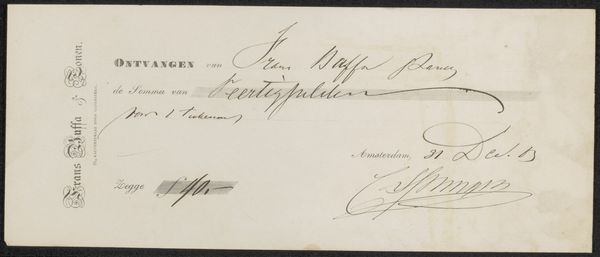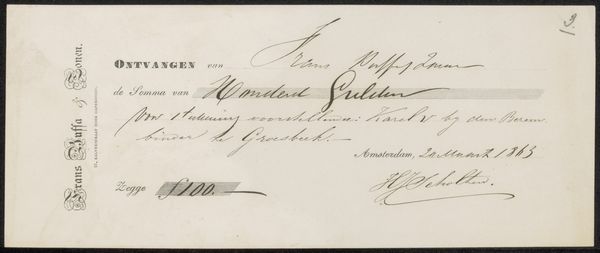
Recipisse ter waarde van 18 gulden, nr. 17681 uitgegeven door het Comité van Financiën te 's-Gravenhage aan een inwoner uit Gorinchem 1795
0:00
0:00
print, paper, typography
#
neoclacissism
#
aged paper
#
homemade paper
#
script typography
# print
#
hand drawn type
#
paper
#
personal sketchbook
#
typography
#
fading type
#
stylized text
#
thick font
#
design on paper
#
historical font
Dimensions: height 10.9 cm, width 16.2 cm
Copyright: Rijks Museum: Open Domain
Curator: This print, titled "Recipisse ter waarde van 18 gulden..." from 1795, seems like a receipt issued by the Committee of Finances in The Hague. It feels very formal. What stands out to you? Editor: The text, for sure. It's all hand-drawn typography, so precise yet somehow delicate. The words “Vrijheid," "Gelijkheid," and "Broederschap" bordering the top and sides especially grabbed my attention. What's the significance of these words being arranged around the edge of the receipt? Curator: That's a keen observation. Those three words – "Freedom", "Equality", and "Brotherhood" – encapsulate the core tenets of the French Revolution. Given the receipt’s date, 1795, it speaks volumes about the political climate in the Netherlands at the time. It was a period heavily influenced by revolutionary fervor spreading from France. So, this isn’t just a receipt; it's a quiet assertion of those revolutionary values within a financial document. Editor: So, its purpose is not just fiscal, but also… ideological? Curator: Precisely! And think about the intended recipient: "een inwoner uit Gorinchem," a citizen of Gorinchem. Why use those revolutionary slogans in what is, after all, a receipt? The financial sphere, like all others, was being politicized. Editor: I never would have looked at a receipt in that light. Now, looking at the object in a social and political context makes me wonder about all of the commonplace things that express power, identity, and social meaning. Curator: Exactly. Everyday objects carry complex historical weight.
Comments
No comments
Be the first to comment and join the conversation on the ultimate creative platform.
